The thundering of hooves across open plains, the billowing dust clouds rising into the blue sky, and the steady calls of cowboys directing their herds – cattle drives represent an iconic chapter in American history that continues in some regions today. At the heart of these operations stands the cattle drive horse, a remarkable equine partner whose skill, endurance, and temperament make the challenging work possible. For beginners looking to understand or participate in this traditional practice, choosing and working with the right horse is essential. This guide explores everything newcomers need to know about selecting, preparing, and working with horses specifically bred and trained for the demanding environment of cattle drives.
The Historical Significance of Cattle Drive Horses
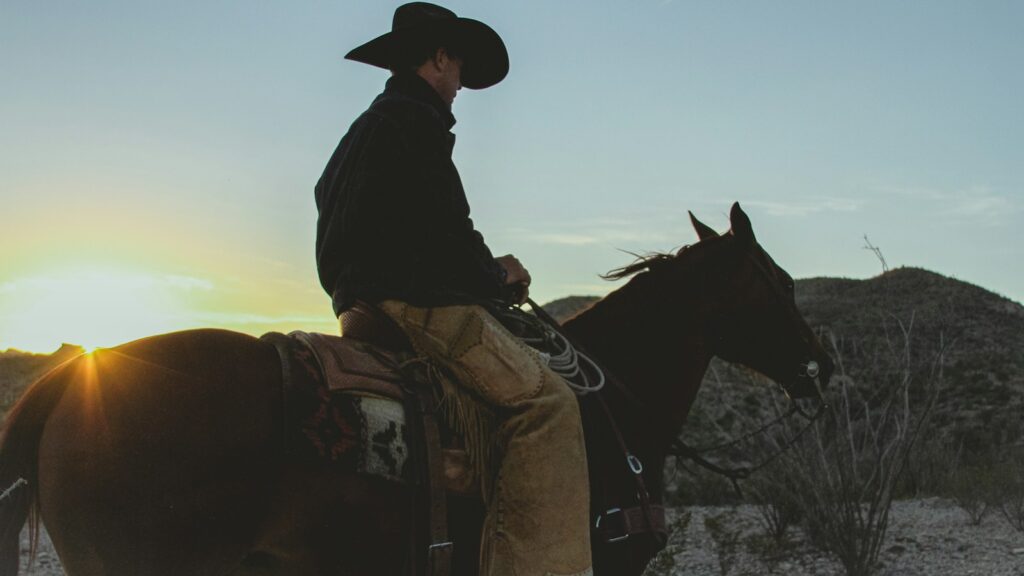
The relationship between cowboys, horses, and cattle drives forms a cornerstone of American western heritage dating back to the mid-1800s. Following the Civil War, cowboys would drive massive herds of Texas Longhorns north to railroad hubs in Kansas, Missouri, and beyond – journeys spanning hundreds of miles through challenging terrain. These epic journeys would have been impossible without specially selected horses whose stamina, intelligence, and cow sense made them indispensable partners. The Quarter Horse, with its explosive speed over short distances and innate ability to anticipate cattle movements, became the predominant breed for this work. Today’s cattle drive horses carry on this legacy, with many operations across the American West still relying on horseback methods that have proven effective for generations.
Essential Qualities of a Good Cattle Drive Horse
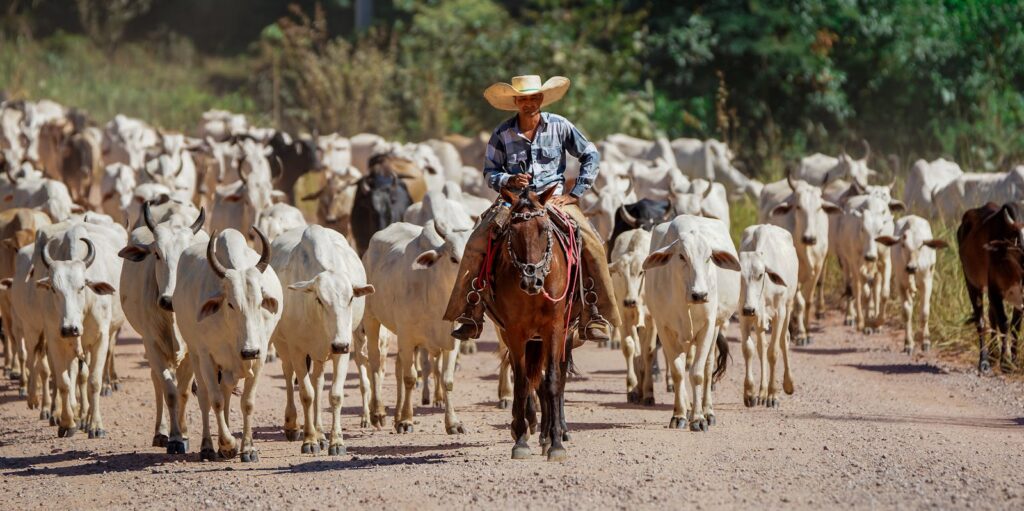
Not every horse is suited for the demanding work of a cattle drive, as this specialized role requires specific physical and temperamental characteristics. The ideal cattle drive horse possesses “cow sense” – an innate ability to read, anticipate, and respond to cattle behavior without constant rider direction. Physical stamina is equally crucial, as these horses must work long days across varied terrain while maintaining energy and focus. Surefootedness ranks high on the list of necessary traits, with these horses navigating rocky slopes, creek crossings, and brush-filled ravines while keeping their riders safe. Finally, a calm, level-headed disposition proves invaluable when working with unpredictable cattle, as spooky or high-strung horses can trigger dangerous herd reactions that compromise the entire operation.
Preferred Breeds for Cattle Work
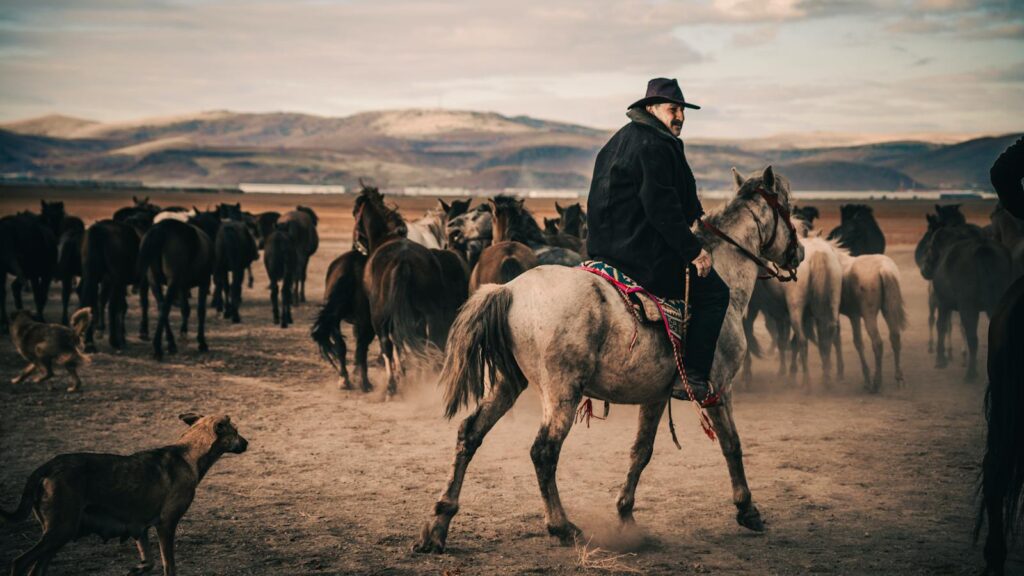
While any horse with the right training and temperament can potentially work cattle, certain breeds have been selectively developed for this specific purpose. The American Quarter Horse stands as the undisputed king of cattle work, with generations of selective breeding enhancing their natural cow sense, athletic ability, and compact power. American Paint Horses, closely related to Quarter Horses but with distinctive color patterns, share many of the same working abilities and are popular choices for their combination of function and striking appearance. Some ranchers prefer the intelligence and endurance of ranch-bred Mustangs, whose survival in the wild has created naturally hardy, surefooted animals. Other solid choices include Appaloosas, known for their stamina and distinctive spotted coats, and various ranch-bred crosses that combine the most desirable traits of working breeds.
Understanding “Cow Sense” in Horses
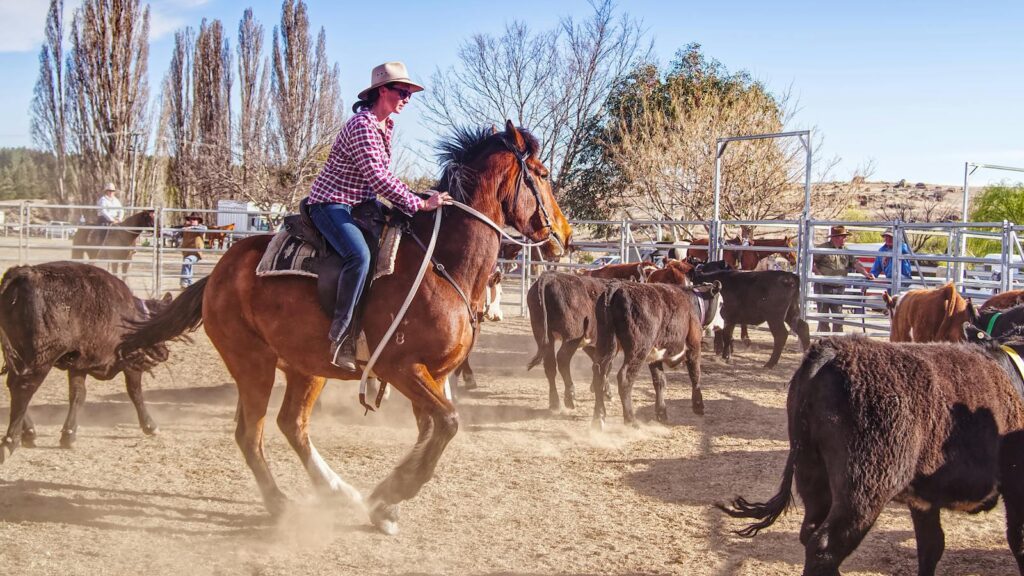
“Cow sense” represents perhaps the most valuable and least trainable quality in a cattle drive horse – an instinctive ability to read, predict, and respond to cattle behavior. Horses with strong cow sense naturally understand how to position themselves relative to cattle, often anticipating movements before they occur and making subtle adjustments without rider input. This quality manifests in the way a horse watches cattle, with ears forward and an intense focus that demonstrates their understanding of herd dynamics. While some training can enhance a horse’s cattle-working abilities, true cow sense appears largely inherited, with certain bloodlines consistently producing offspring with this natural talent. For beginners, choosing a horse with established cow sense provides an invaluable advantage, as the horse’s intuition can compensate for the rider’s inexperience during the learning process.
Physical Conditioning for Cattle Drive Horses
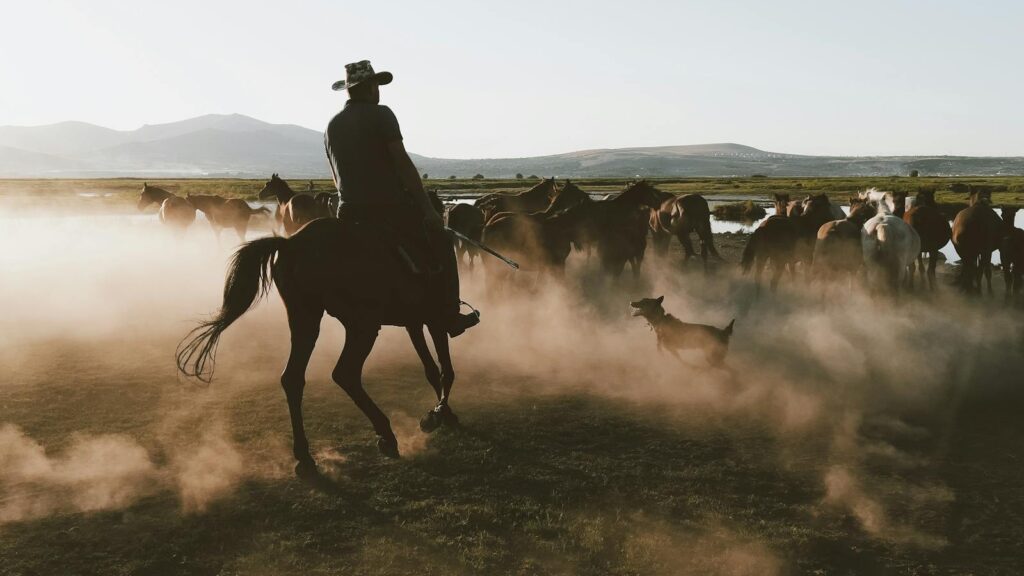
The physical demands placed on horses during cattle drives necessitate careful conditioning to prevent injury and ensure peak performance. A progressive fitness program should begin months before any multi-day drive, gradually building cardiovascular endurance through increasingly longer rides at varied gaits and terrains. Strengthening hill work proves particularly valuable, developing the hindquarter muscles needed for driving cattle up inclines and the controlled descending ability required on downhill sections. Proper hoof conditioning is essential, as many working horses perform better unshod or with minimal shoes that allow natural foot function and better traction on varied surfaces. Riders must monitor for signs of fatigue during conditioning, including prolonged elevated breathing, reluctance to move forward, or unusual sweating patterns, adjusting workouts accordingly to build fitness without overtraining.
Essential Equipment for Cattle Drive Horsemanship
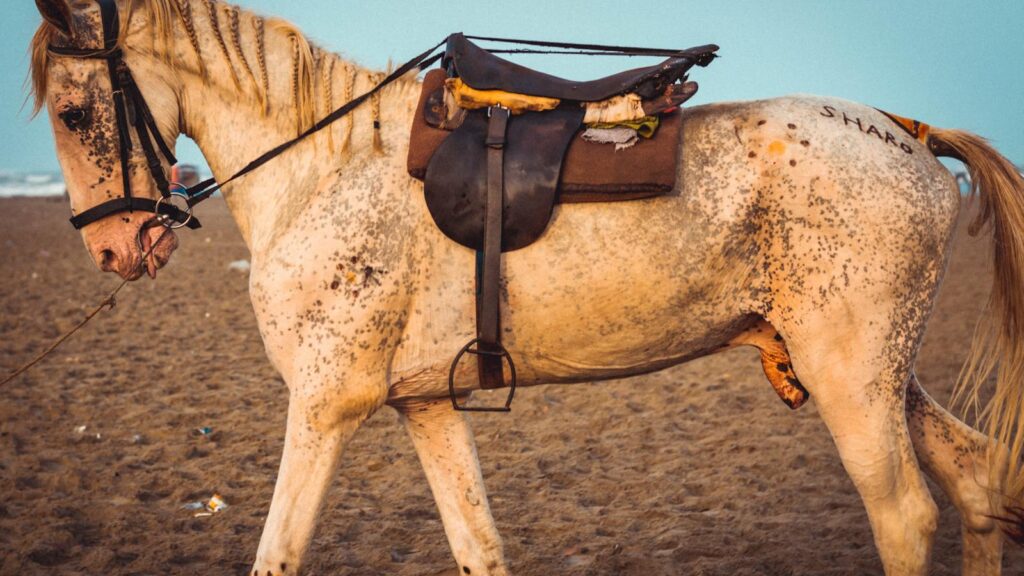
The right tack and equipment can significantly impact horse comfort and effectiveness during the long days of a cattle drive. Traditional western saddles with their substantial weight distribution, secure seat, and sturdy horn remain the industry standard, providing both horse and rider stability during long hours and quick maneuvers. Split reins offer versatility in cattle work, allowing one-handed riding while keeping the other hand free for ropes or gates, with excess length that can function as a quirt when needed. Many experienced cattle hands prefer simple snaffle bits that provide clear communication without excessive leverage, particularly for horses already well-trained in their job. Protective boots for horses’ legs merit consideration on rough terrain, with professional-grade splint boots or skid boots preventing injuries during quick stops and turns. Proper saddlebags accommodate essentials such as water, basic first aid supplies, and emergency equipment for both horse and rider.
Basic Training Requirements for Cattle Horses

Before introducing a horse to actual cattle work, establishing solid foundational training ensures both safety and effectiveness when the real job begins. Exceptional responsiveness to leg pressure proves crucial, as cattle work often requires riders to keep both hands occupied with ropes or other equipment while directing their mount. A cattle horse must willingly work independently of other horses when needed, maintaining focus on their job rather than herd-bound behaviors that could compromise control. Desensitization training prepares horses for the unpredictable nature of cattle drives, from flapping tarps and sudden movements to unusual sounds and environmental challenges they’ll encounter on the trail. Finally, cattle horses require progressive exposure to livestock in controlled settings, beginning with calm cattle in small enclosures before gradually advancing to more challenging scenarios that build confidence without overwhelming the horse.
Horse Positioning and Movement During Drives

Understanding proper horse positioning relative to cattle represents a fundamental skill for effective and safe cattle driving. Experienced horses instinctively recognize the “pressure zone” – the area where their presence motivates cattle to move in the desired direction without causing panic or stampedes. Different positions serve specific functions during a drive, with point riders at the front setting direction and pace, flank riders maintaining the herd’s shape and preventing strays, and drag riders bringing up the rear to keep stragglers moving. Horses must learn to maintain consistent pressure, neither rushing cattle to exhaustion nor allowing the drive to lose momentum and cohesion. The most skilled cattle horses demonstrate remarkable economy of movement, making minimal adjustments that effectively influence the herd while conserving their energy for the long haul.
Health Considerations for Working Horses

The physical demands of cattle drives require meticulous attention to equine health needs before, during, and after the work. A comprehensive health program starts with regular veterinary care, including appropriate vaccinations for diseases prevalent in the regions where the drive will occur. Nutrition must be calibrated to meet increased energy demands, typically requiring quality forage supplemented with appropriate concentrates to maintain weight and energy during periods of intense work. Water management presents one of the greatest challenges, with horses needing regular access to clean water sources along the route, especially during hot weather when dehydration risks increase significantly. Daily checks for saddle sores, leg swelling, hoof issues, or signs of fatigue allow early intervention before minor problems develop into conditions that might sideline a valuable horse during a critical operation.
Common Challenges for Beginners
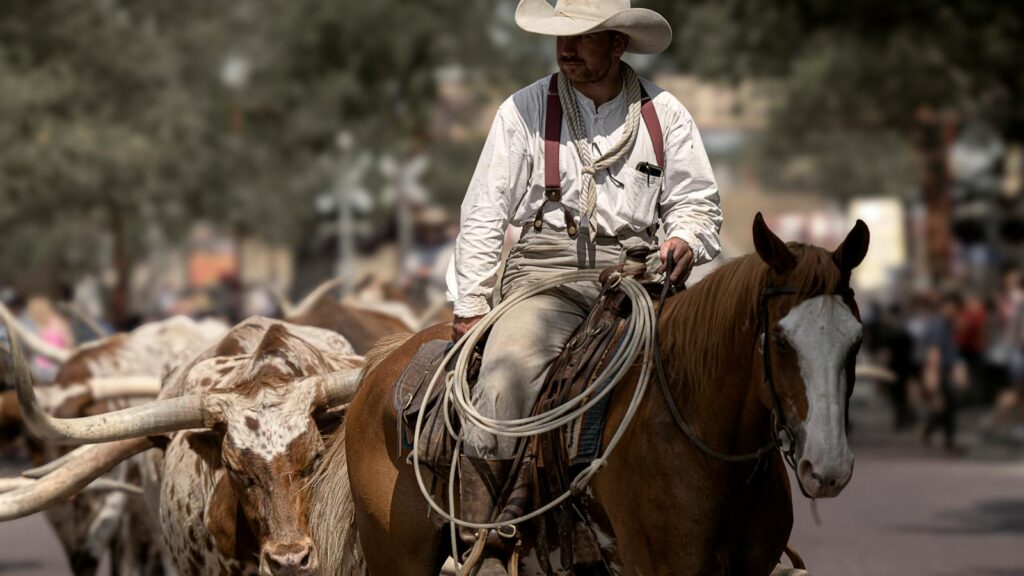
Newcomers to cattle drive horsemanship typically face several predictable challenges that require patience and progressive skill development to overcome. Maintaining proper position relative to cattle proves difficult for beginners, who often position too close (causing cattle to scatter) or too far (losing effective control). Rope handling while mounted presents another significant hurdle, requiring riders to simultaneously manage their horse, track a moving target, and throw accurately – a complex coordination challenge that improves only with dedicated practice. Many beginners struggle with reading terrain strategically, failing to anticipate how geographical features will influence cattle movement and missing opportunities to use natural features to their advantage. Perhaps most challenging is developing the situational awareness to monitor not just your own assignment but the overall drive dynamics, anticipating problems before they escalate and coordinating smoothly with other riders.
Weather Considerations and Horse Management
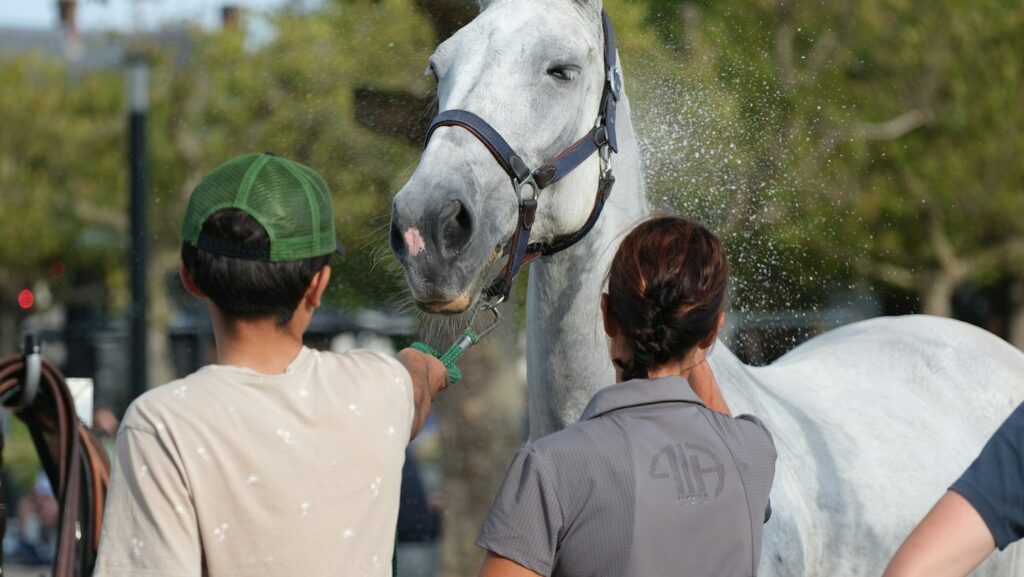
Weather conditions significantly impact cattle drive operations and require specific horse management strategies to maintain safety and effectiveness. Extreme heat necessitates scheduling work during cooler morning and evening hours whenever possible, with frequent rest periods in shade and constant monitoring for signs of heat stress in working horses. Cold weather drives demand proper blanketing protocols during overnight stops, careful warming up before work begins, and special attention to hydration since horses often drink less in cold conditions. Wet conditions create additional challenges, with increased risk of thrush and other hoof problems that require diligent cleaning and treatment at day’s end. Experienced drovers develop contingency plans for severe weather events, identifying potential shelter locations along the route and establishing clear protocols for protecting both livestock and horses when conditions deteriorate rapidly.
Learning from Experienced Cattle Hands
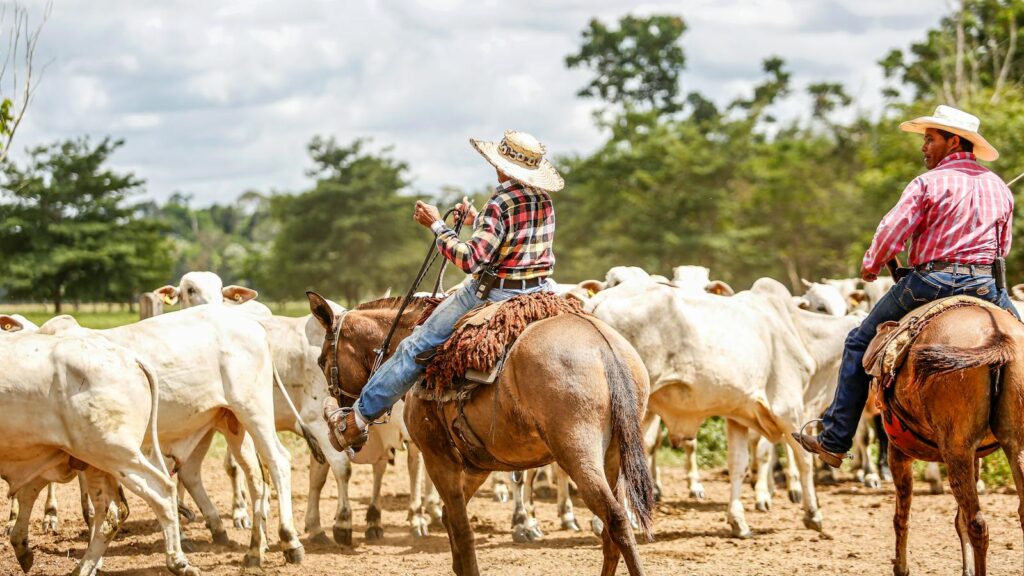
The knowledge required for successful cattle drive horsemanship has been passed down through generations of working cowboys, making mentorship invaluable for newcomers to this specialized field. Apprenticing with established operations provides practical, hands-on experience that no book or video can fully convey, allowing beginners to observe the subtle cues and techniques that make experienced hands effective. Regional variations in cattle handling traditions offer different perspectives worth studying, from the brush country techniques of South Texas to the high mountain approaches of Wyoming outfits. Many working ranches now offer guest programs where beginners can participate in actual cattle work under supervision, providing an authentic introduction to the skills required while ensuring safety for all involved. The oral traditions of cattle culture contain valuable wisdom about horse selection, training approaches, and problem-solving that continues to be relevant even as some aspects of the industry modernize.
Preserving the Traditions of Cattle Drive Horsemanship
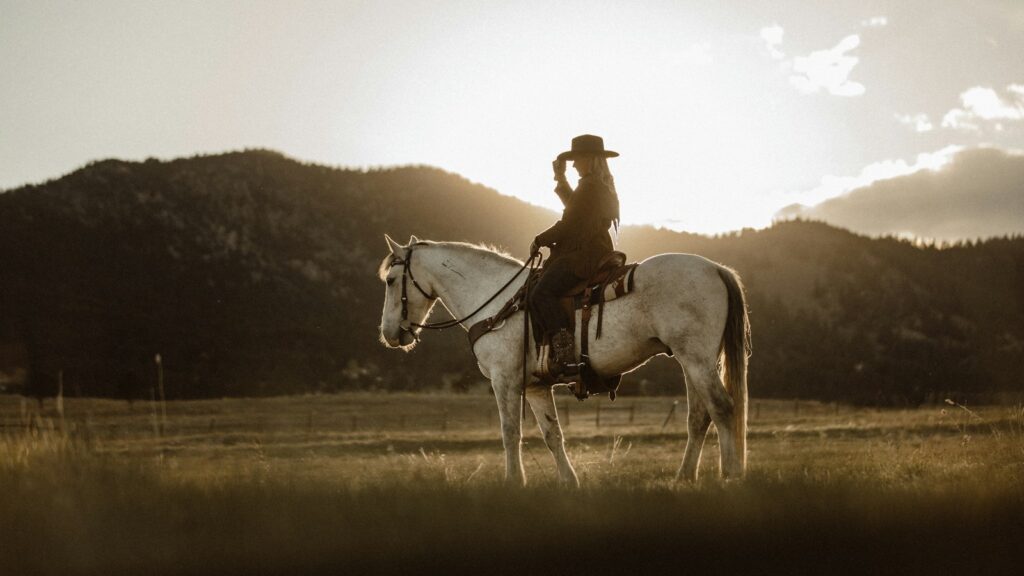
In an age of ATVs, helicopters, and modern ranching technology, traditional cattle drive methods represent an important cultural heritage worth preserving for both practical and historical reasons. Organizations like the Working Ranch Cowboys Association actively promote the continuation of horseback cattle handling skills through competitions, demonstrations, and educational programs aimed at younger generations. Beyond the cultural significance, many ranchers maintain that for certain terrain and situations, well-trained horses and skilled riders remain the most effective and least stressful method for moving cattle across significant distances. The relationship between horse, rider, and cattle represents an ecological approach to land management that often proves more sustainable than mechanized alternatives, particularly in fragile rangeland environments. For many practitioners, the preservation of these skills connects them to a lineage of horsemanship that spans centuries and continues to offer relevant solutions to the practical challenges of cattle management in diverse landscapes.
conclusion
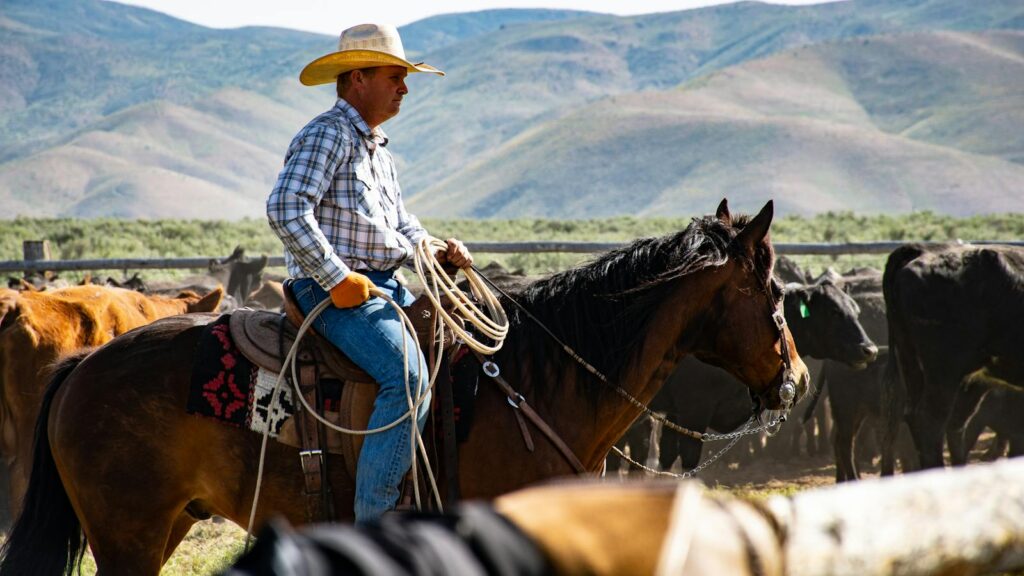
The legacy of cattle drive horses continues to thrive in various parts of the American West and beyond, offering beginners a connection to both practical animal husbandry skills and rich cultural traditions. While the learning curve may be steep, the rewards extend far beyond mere nostalgia. The partnership between a skilled rider and a well-trained cattle horse represents one of the most sophisticated forms of human-animal cooperation, demonstrating how two species can work together to accomplish complex tasks with remarkable efficiency. For those willing to invest the time in proper selection, training, and skill development, cattle drive horsemanship offers a deeply satisfying pursuit that honors tradition while remaining relevant in contemporary ranch operations. As you begin your journey, remember that the best teachers have four legs – an experienced cattle horse can be your most valuable guide to this enduring aspect of western heritage.







